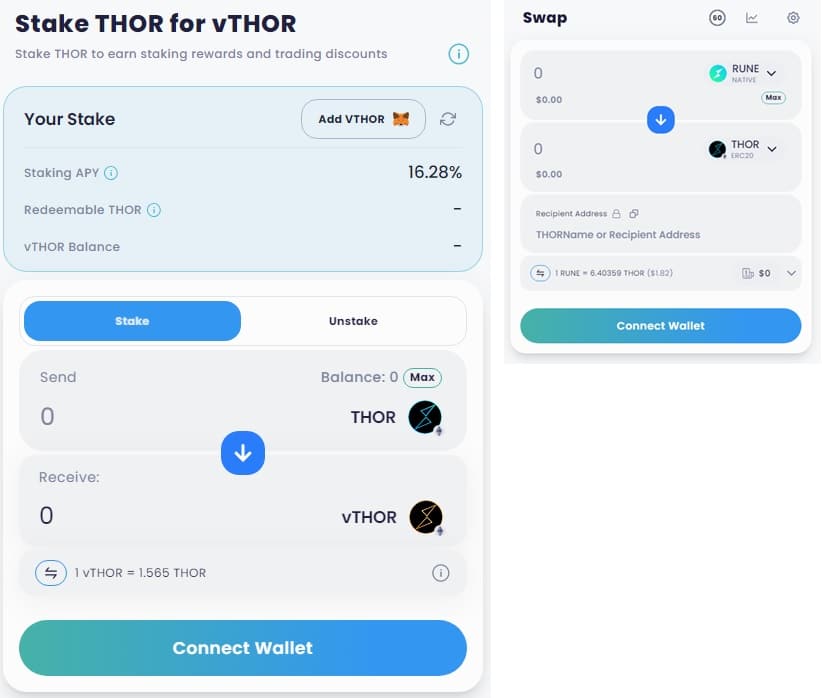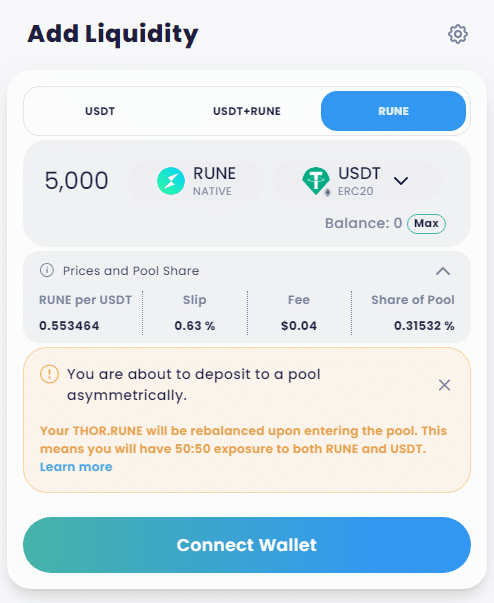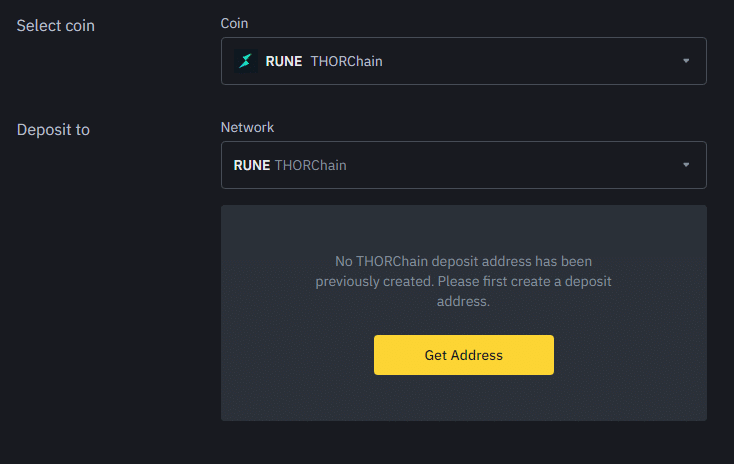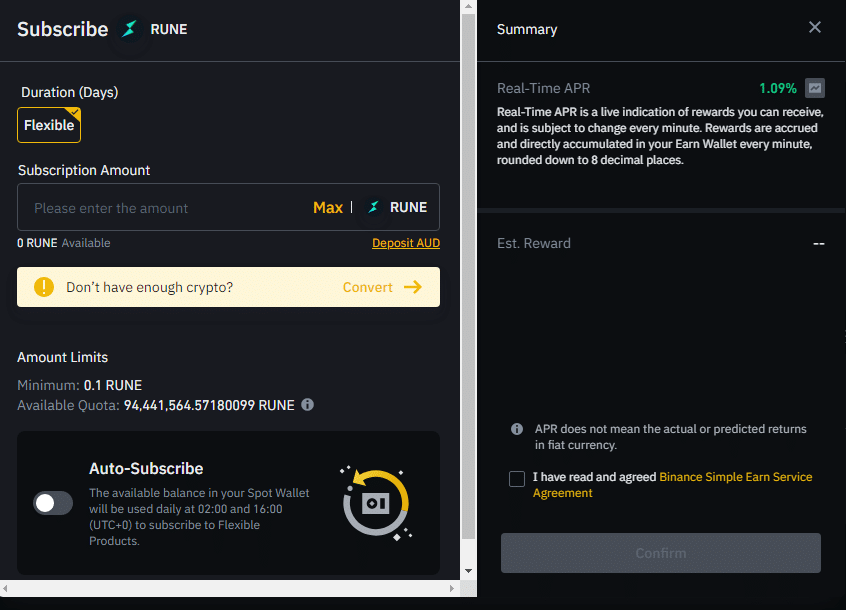We may earn a commission from links on our site, but this doesn’t affect our reviews. Learn more.
Hedge With Crypto is an independent publisher that provides objective and free content. Articles on our site may include links to our partners. If you click on these links, we may earn a commission. However, our editorial content remains unbiased, reflecting our own opinions or the general information available. For more information on our company policies, read the Affiliate Disclosure, Privacy Policy, and Terms & Conditions.
Where & How To Stake Rune
RUNE is the native token of a popular decentralized application and liquidity protocol powered by the THORChain network. Compare the best places to stake Rune to earn rewards.
Hedge With Crypto aims to publish information that is factual and accurate as of the date of publication. For specific information about a cryptocurrency exchange or trading platform please visit that provider’s website. This information is general in nature and is for education purposes only. Hedge With Crypto does not provide financial advice nor does it take into account your personal financial situation. We encourage you to seek financial advice from an independent financial advisor where appropriate and make your own enquiries.
TABLE OF CONTENTS
You can stake RUNE coins; however, it is extremely hard to do so. There is no easily accessible delegation system, so RUNE holders must operate a node to receive a staking yield. This requires in excess of $1.5M USD to get started. Alternatively, investors can “stake” RUNE on Binance, convert it to another native THORChain token, or contribute RUNE to a liquidity pool.
At the time of writing, nearly half of all RUNE is being “staked,” earning an average APY of 13.54%. Unfortunately, staking RUNE is out of reach for most investors, as it requires locking up more than $1M USD. However, there are options for investors to earn on RUNE and other native THORChain tokens. Here's a quick list of where you can stake Rune to earn the best staking rewards:
- Binance (Best exchange for Rune staking)
- THORSwap Staking (Best overall method to stake Rune)
- THORSwap (Providing liquidity to earn Thor rewards)
Staking Rune and Supported Exchanges
1. Binance
Binance is by far the world’s largest staking platform known for its comprehensive earn hub. There are hundreds of tokens that Binance users can stake and earn upon, and RUNE is no exception. However, RUNE is not a natural staking token and has fairly low demand, which results in Binance offering an APR of 1.09%. It’s worth noting that this figure doubled from 0.5% to above 1% in just 48 hours of writing this article, so the rates can become more/less appealing quite quickly.

Binance offers flexible staking duration, which means investors can lock and unlock their “staked” RUNE at any time without penalty. Users must deposit a minimum of 0.1 RUNE to participate in the staking pool (equivalent to less than twenty cents at the time of writing). Binance staking products work on a first-come-first-served basis and may not be available if their quota is filled. However, RUNE’s quota is 10,000 RUNE, and given its lack of popularity and low rewards, this is unlikely to be an issue.
Overall, Binance’s low Rune staking rates are unattractive for investors with significant holdings. For example, a user that locked up $1 million worth of RUNE on Binance would receive $11,000 annually. For context, someone who converted their RUNE to THOR and staked it on THORSwap would receive approximately $150,000 in rewards (less gas and transaction fees). However, investors adamant about holding RUNE should consider staking on the Binance platform, given it is easy and safe to do – and a 1.1% yield is better than nothing.
Read our full Binance review.
2. THORSwap
In March 2022 the THORChain developers released their new single-sided staking contract, meaning investors could stake their Rune tokens on-chain like any other staking coin. THORSwap is the flagship decentralized application running on the THORChain network. The permissionless swapping protocol platform uses THOR as its native token to perform various functions. RUNE and THOR use the same underlying blockchain, so investors can seamlessly swap between the coins on the THORSwap platform.
To reward users for locking up their THOR coins, THORChain automatically pays out transaction fees to stakers. This usually results in a variable, but typically quite lofty APY on offer for staking THOR. As of writing this article, the token’s staking APY is 16.28%, a figure that features auto-compounding on a daily basis.

It is worth noting that the staking process on THORSwap requires users to convert their ERC-20 THOR tokens for vTHOR. vTHOR is just a synthetic, transferable token that represents each investor’s staking position. vTHOR holders are rewarded with THORSwap trading discounts on top of passive income generation, making it very cost-effective to swap between THOR and RUNE. When a user unstakes their vTHOR, it will automatically be converted back into the regular THOR token (which can be swapped back to RUNE).
One thing to watch out for is Ether gas fees, which can skyrocket during popular NFT mints or heavy trading hours and make staking Rune less efficient. Investors must have a bit of Ether in their wallets to cover the network fees when staking and unstaking coins.
THORSwap can be integrated with popular non-custodial wallets, including:
- TrustWallet
- MetaMask
- Ledger
- Keplr wallet
Staking THOR on the THORSwap dApp is the best way to stake RUNE holdings. Admittedly, it requires a couple of extra steps than using a centralized platform, but the impressive APY of 15+% on offer is well worth the additional effort. As the same blockchain backs THOR and RUNE tokens, they are extremely interchangeable. Staking THOR on THORSwap is a very simple process with no lock-up periods.
3. THORSwap
Providing liquidity on THORSwap is currently the only on-chain way to passively generate income on RUNE holdings outside of operating a node (which requires $2M+ in upfront capital). Permissionless swap platforms like THORSwap utilize an automated market maker (AMM), which requires investors to provide liquidity by locking up tokens in a pool. The AMM algorithm then rewards liquidity providers by paying them a portion of that pool’s transaction fees.
When providing liquidity to THORSwap, RUNE holders have two options:
- Provide liquidity to a pool depositing just RUNE
- Provide liquidity to a pool depositing RUNE and its pool pair
For example, let’s say an investor wanted to deposit into the RUNE+USDT pool, but only wanted to deposit 5,000 RUNE. The RUNE would automatically be rebalanced as a 50/50 split between USDT and RUNE. In this instance, the investor would have a 0.31% share of the pool (and receive that equivalent amount in fees).

Conversely, another investor could contribute to the same pool but deposit an equivalent amount of both RUNE and USDT. Either way, the rewards available will vary depending on THORSwap’s activity. The average APY is around 13-14%, but at the time of writing liquidity providers can receive in excess of 22% yield per annum.
While contributing to a liquidity pool is by far the most lucrative method for yielding on RUNE holdings, it is also quite complex and can present issues with high gas fees and slippage. This method of earning is perfect for experienced yield farmers and liquidity miners compared to staking but is more complex for novices who just want to hold RUNE in a staking wallet.
The Basics of RUNE Tokens
RUNE is the native token of the decentralized THORChain network. THORChain is part of a class of dApps known as “liquidity protocols”, which utilize automated market makers (AMM) to facilitate permissionless swapping of digital currencies. RUNE is the native token of the THORChain network and its associated platforms. For example, RUNE can be used to vote on governance matters and to pay transaction fees. The THORCHain proof-of-stake network uses 120 node operators locking up in excess of 1 million RUNE to secure the blockchain.
Yes, You Can You Stake RUNE
You can stake their rune by running a node on the network. However, the barrier to doing this is extremely high and out of reach for the vast majority of holders. It requires over $1.5M USD in capital to get started, and there is no major delegation system for lower-net-worth investors to capitalize on staking RUNE. Investors can find the “average” bond size and if there are any open node operator slots via the THORChain explorer. Similarly, very few staking platforms offer savings accounts and staking services for RUNE tokens, limiting the currency’s earning potential.
However, users can convert their RUNE to the ERC-20 token THOR and stake that on the THORSwap decentralized application for solid yields. In addition, the primary passive money-making strategy for RUNE tokens is to lock them up into a liquidity pool. This is more complex and riskier than delegating crypto to a node operator, but also more lucrative. Finally, Binance offers a RUNE staking product, although the rewards on offer are extremely poor.
This Is How Much Can You Earn Staking RUNE
Node operators with millions of RUNE locked up can earn $40,000+ per month, or around 12% APY. The simplest and lowest-barrier method of staking RUNE (via Binance) will yield 1.1% per year. So someone that staked 1,000 RUNE would receive 0.91 tokens per month – barely more than a dollar.
More complex methods generate much better yields, comparable to some of the best altcoins on the market. Swapping RUNE to THORSwap tokens and staking them can see rates of up to 16% per year. Similarly, providing RUNE to a THORSwap liquidity pool can often return more than 20% p.a. Although more effort and depth of knowledge are required to participate in these earning methods, the huge jump in earnings may be worth it for most investors.
How to Stake RUNE on Binance
For investors who just want the easiest way to earn on their RUNE, regardless of yield, Binance is pretty much the only option available. Binance customers can stake RUNE for an APY of 0.5%, although this figure is subject to change.
To stake RUNE using a crypto exchange, follow these steps:
1. Register an account with Binance
Visit Binance and create an account if one doesn’t already exist. To access all of the platform’s features, new users must verify their accounts. This requires uploading an image of a government-issued document, such as a driver’s license or passport.
2. Send RUNE to Binance Wallet
Investors that already own RUNE can send it directly to their Binance wallet address. To find the address, head to “Wallet”, “Fiat & Spot” and navigate to RUNE. Select “Deposit”, and Binance will generate a new THORChain wallet address. Alternatively, customers can buy RUNE from Binance with trading fees of just 0.1%.

3. Navigate to Binance Earn
Navigate to “Binance Earn” and select “Simple Earn.” This will create a large list of available earning products. Enter “RUNE” into the search bar to find all accessible RUNE earning programs. At the time of writing this article, there is only one available. Select “Subscribe”.
4. Stake RUNE
Filter through the earning program’s requirements and enter the amount of RUNE to be staked. As the only product available for RUNE holders is a “Flexible contract”, investors won’t have to decide how long to lock up their tokens for. However, this may change and is something to keep in mind. Agree to the Service agreement and confirm the transaction to begin staking RUNE.
